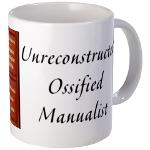QUAERITUR: Form of absolution was just “I absolve you of your sins.”
 From a reader:
From a reader:
I went to confession at a neighboring parish that had recently received a 70-something priest who I know to be a bit free-wheeling as far as anything liturgical or doctrinal. This made me nervous going, but I needed to go.
Confession went as usual, but after giving a penance, He simply said, “I absolve you of your sins” and that was it. No sign of the cross or anything. I asked if I was to make an act of contrition, and he replied that I could if I liked. After I had finished, I asked him if he would give me absolution in the words of the Church (I figured this was a bit forward, but at the same time I didn’t want to wonder about validity or re-confess). He said that he had, so I saw no point and thanked him and left. Ultimately, I am wondering if this is valid, if I was too forward, and if there is anything that should be done if his manner of absolution is invalid.
That was valid. You were not too forward to ask for the Church’s proper form. And there is, in fact, something to be done.
The formula of absolution is, in its short form, “Ego te absolvo a peccatis tuis, in nomine Patris +, et Filii, et Spiritus Sancti… I absolve you from your sins in the name of the Father +, and of the Son and of the Holy Spirit.” This is the last part of a longer formula, which in translation is, “God, the Father of Mercies, through the death and resurrection of his Son has reconciled the world to himself and sent the Holy Spirit among us for the forgiveness of sins; through the ministry of the Church may God give you pardon and peace, and I absolve you from your sins in the name of the Father, and of the Son, and of the Holy Spirit. Amen.” The short version suffices by itself in a pinch. More and more priests these days are using the older, traditional form of absolution as well.
That said, St. Thomas Aquinas argues (though his opinions are not the equivalent of the Church’s Magisterium – never forget that!) that “Ego te absolvo“ is the form of the sacrament (ST III, Q. 84, Art. 3). If he is right, then that may suffice.
The Catechism of the Council of Trent, reliable and surely an expression of the Church’s Magisterium, and surely working from Aquinas has this:
Pastors should not neglect to explain the form of the Sacrament of Penance. A knowledge of it will excite the faithful to receive the grace of this Sacrament with the greatest possible devotion. Now the form is: I absolve thee, as may be inferred not only from the words, whatsoever you shall bind upon earth shall be bound also in heaven, but also from the teaching of Christ our Lord, handed down to us by the Apostles.
 These days it seems that the minimum form in the Latin Church (the Eastern Churches have their own somewhat different practices) is “Ego te absolvo a peccatis tuis… I absolve you from your sins.” As far as I can tell, this is what most authors stand by. Because I am an Unreconstructed Ossified Manualist, I consulted several manuals (e.g., Tanquerey, Prümmer, Sabetti Barrett). They all come to the same basic conclusion. “Absolvo te a peccatis tus” is certainly valid, and “Absolvo te” is probably valid, but if possible the longer form should be repeated to be sure.
These days it seems that the minimum form in the Latin Church (the Eastern Churches have their own somewhat different practices) is “Ego te absolvo a peccatis tuis… I absolve you from your sins.” As far as I can tell, this is what most authors stand by. Because I am an Unreconstructed Ossified Manualist, I consulted several manuals (e.g., Tanquerey, Prümmer, Sabetti Barrett). They all come to the same basic conclusion. “Absolvo te a peccatis tus” is certainly valid, and “Absolvo te” is probably valid, but if possible the longer form should be repeated to be sure.
Part of the problem here - aside from the arrogance of priests who screw around with the form of absolution – is the notion of using regularly the bare minimum. That suggests that perhaps the rest is not so important.
If you confess to a priest who regularly does something dodgy with the form of absolution, I would politely bring it up, as you did. People are within their rights to have the form of absolution spoken as it is in the book. Ask the priest to give you absolution with the proper form. Do not be nasty or aggressive about this.
If that doesn’t help, talk to the pastor of the parish and/or the local bishop.
Remember that the priest himself cannot talk about the confession because he is bound by the Seal. Therefore, you can politely inform the the bishop about your experience of the form of absolution. You would have to include that you have been to this priest several times and that he has always done the same thing. Do not run him down. Do not add lots of observations. Do not try to teach the bishop his job or theology.
Ideally, the bishop (or pastor) would then have a chat with the priest during which the priest would be informed that word had come that he isn’t using the proper form of absolution and, if true, that should be corrected – lest in the future he receive in spades the wrath of the whatever from high atop the thing.
If that doesn’t produce results, send a copy of your correspondence to the Congregation for the Doctrine of the Faith (not Divine Worship) and seek a clarification.

